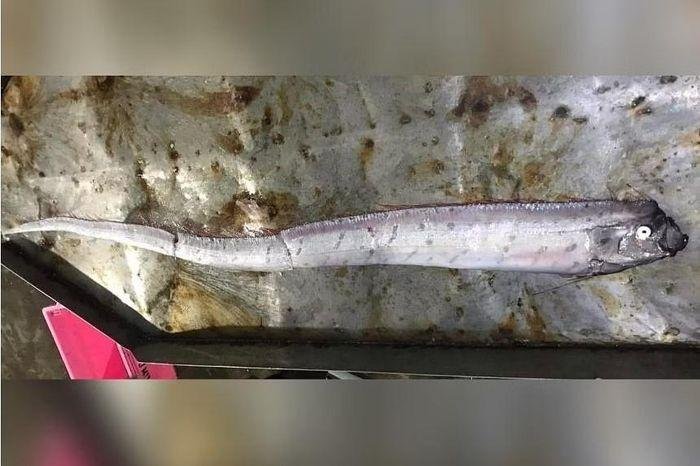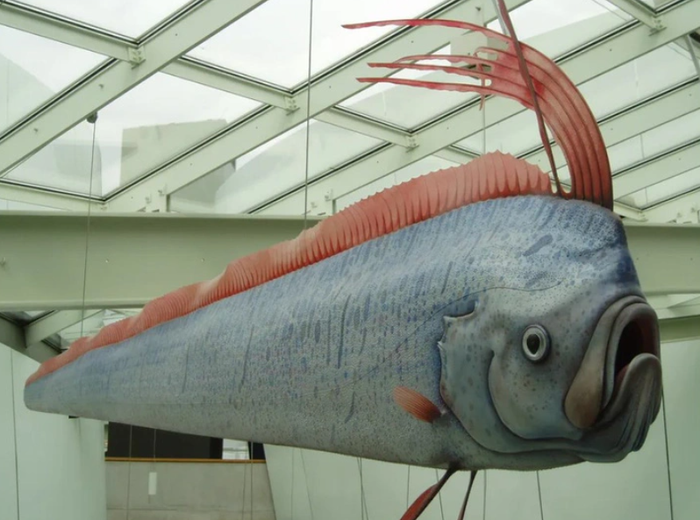According to Japanese folklore, the appearance of oarfish in shallow water is a harbinger of an earthquake or tsunami.
Oarfish are also known as “earthquake fish”. This fish is usually found in waters up to 1,000 meters deep and is rarely seen by humans on the surface.
According to Japanese folklore, the appearance of oarfish in shallow water is a harbinger of an earthquake or tsunami.
Recently on January 3, an 11-meter-long oarfish caught by Thai fishermen in Andaman attracted attention. The discovery of the oarfish – just days after a deadly earthquake hit Japan on New Year’s Day – immediately drew fear among locals in La-ngu, Satun province, on the southwest coast of Thailand.

Paddlefish are said to have appeared on the Thai coast on January 3
Thai media quoted Boomerang, a local resident, as saying: “If an oarfish is encountered in the vicinity of Satun, it may indicate potential concerns about a longshore earthquake Andaman Sea”.
However, biologists believe that the oarfish appearing on the Thai coast may also be due to cold water from the Indian Ocean flooding into the Andaman Sea. Mr. Thamrongnāwāsawat – marine ecology lecturer at Kasetsart University, Thailand, said that due to the extreme weather phenomenon in the Indian Ocean, when cold water flooded into the Andaman Sea, it led to the capture of rare fish species. The Indian Ocean Dipole is an uneven fluctuation in sea surface temperature, with the western Indian Ocean becoming warmer, while the eastern part of the ocean becomes colder.

Paddlefish model. Photo: Smithsonian magazine
It is known that the paddlefish with the scientific name Regalecus glesne is a large, elongated ray-finned fish that can be found in areas ranging from temperate to tropical waters.
There are three types of oarfish. The giant oarfish is the longest bony fish alive, growing up to 11 meters long. This is the reason why this fish is called “naga fish” by Thai people. In Thai, naga refers to a snake with scales and a golden comb.





